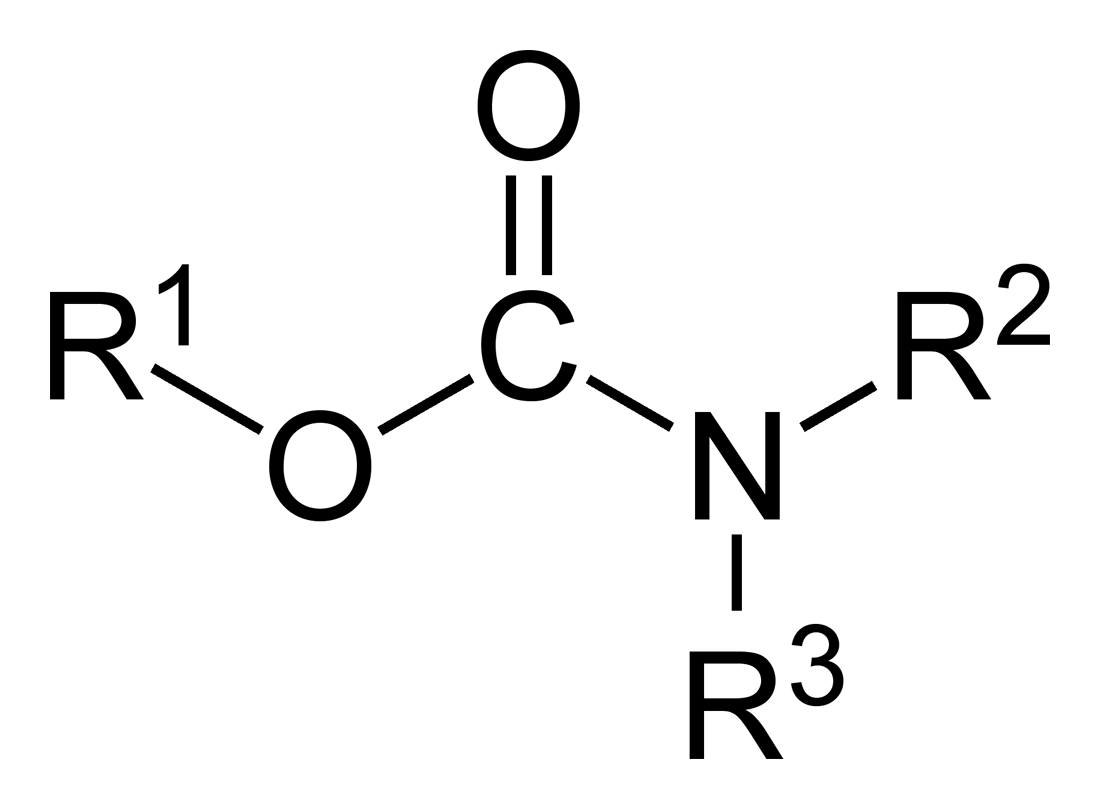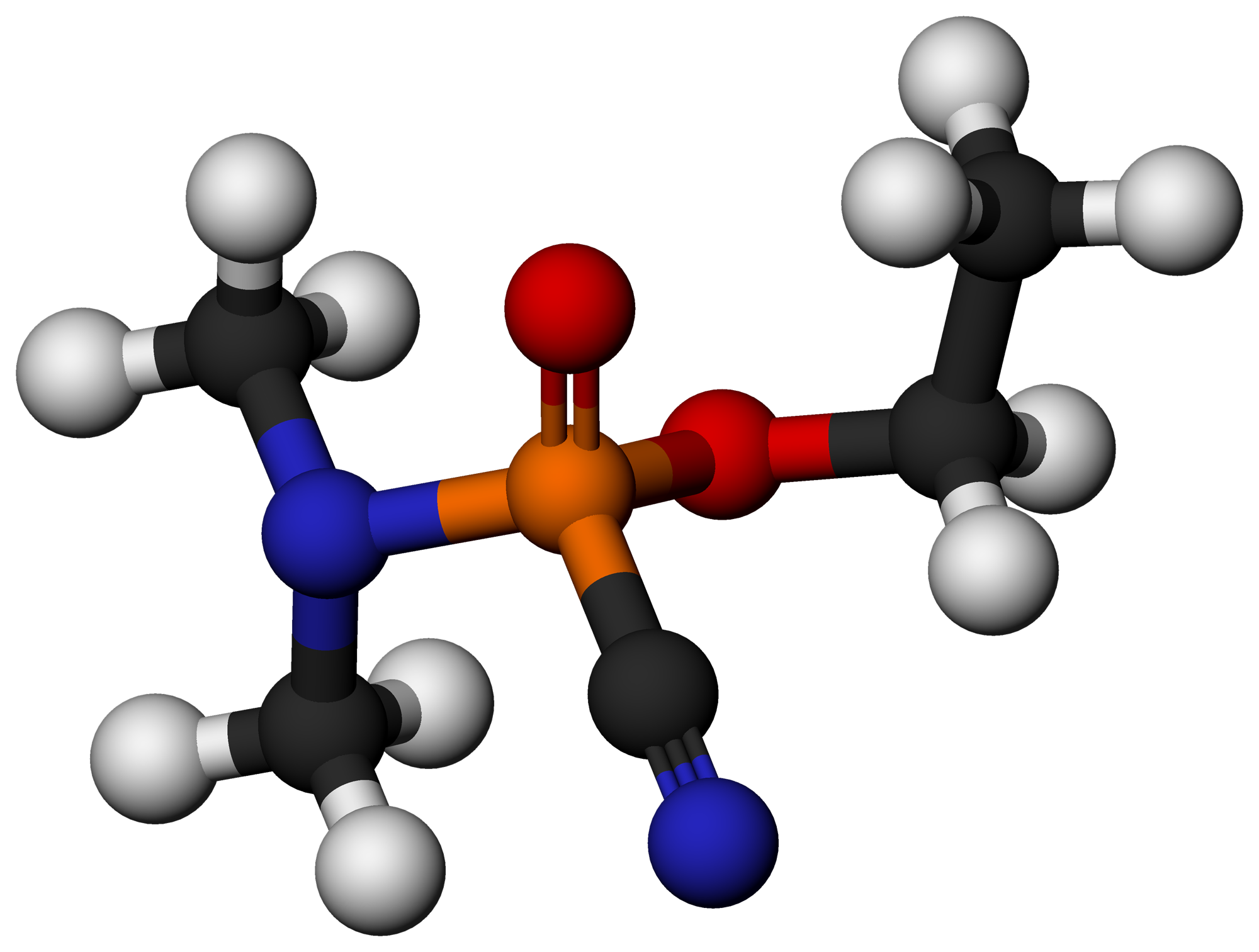|
T-1194
T-1194, also known as TL-1323, is an extremely toxic carbamate nerve agent. T-1194 is the N-methylcarbamate ester of edrophonium iodide. The bromide salt of T-1194 is AR-14. See also * T-1123 * T-1152 *TL-599 * TL-1238 *Neostigmine Neostigmine, sold under the brand name Bloxiverz, among others, is a medication used to treat myasthenia gravis, Ogilvie syndrome, and urinary retention without the presence of a blockage. It is also used in anaesthesia to end the effects of n ... * Miotine References Carbamate nerve agents Acetylcholinesterase inhibitors Quaternary ammonium compounds Iodides Phenol esters Aromatic carbamates {{Neurotoxin-stub ... [...More Info...] [...Related Items...] OR: [Wikipedia] [Google] [Baidu] |
T-1123
T-1123 is a carbamate-based acetylcholinesterase inhibitor. It was investigated as a chemical warfare agent starting in 1940. It does not go through the blood-brain barrier due to the charge on quaternary nitrogen. The antidote is atropine. T-1123 is a quaternary ammonium ion. A phenyl carbamate ester is bonded in the meta position to the nitrogen on a diethylmethyl amine. The chloride and methylsulfate salt of T-1123 is TL-1299 and TL-1317, respectively. Synthesis T-1123 can be produced from m-diethylaminophenol, methyl isocyanate and methyl iodide Iodomethane, also called methyl iodide, and commonly abbreviated "MeI", is the chemical compound with the formula CH3I. It is a dense, colorless, volatile liquid. In terms of chemical structure, it is related to methane by replacement of one h .... First, m-diethylaminophenol is reacted with methyl isocyanate to produce a methylcarbamate. The resulting methylcarbamate is then reacted with methyl iodide to produce T-1123. See ... [...More Info...] [...Related Items...] OR: [Wikipedia] [Google] [Baidu] |
T-1152
T-1152 is a quaternary carbamate anticholinesterase. It is synthesized by reaction of m-dimethylaminophenol with methyl isocyanate, followed by quaternization with methyl iodide. Since T-1152 is toxic by ingestion, it was patented as a rodenticide in 1932. The chloride and methylsulfate salt of T-1152 is T-1690 (TL-1226) and AR-13, respectively. See also *Neostigmine * T-1123 *T-1194 *TL-599 TL-599, also known as SB-8, is an extremely potent carbamate class acetylcholinesterase inhibitor. See also *Neostigmine * Miotine * T-1123 * T-1152 * T-1194 * TL-1238 *Physostigmine Physostigmine (also known as eserine from ''éséré'', th ... * TL-1238 References {{Rodenticides Carbamate nerve agents Acetylcholinesterase inhibitors Aromatic carbamates Phenol esters Quaternary ammonium compounds Iodides Rodenticides ... [...More Info...] [...Related Items...] OR: [Wikipedia] [Google] [Baidu] |
TL-599
TL-599, also known as SB-8, is an extremely potent carbamate class acetylcholinesterase inhibitor. See also *Neostigmine * Miotine * T-1123 * T-1152 * T-1194 * TL-1238 *Physostigmine Physostigmine (also known as eserine from ''éséré'', the West African name for the Calabar bean) is a highly toxic parasympathomimetic alkaloid, specifically, a reversible cholinesterase inhibitor. It occurs naturally in the Calabar bean and ... References Acetylcholinesterase inhibitors Aromatic carbamates Quaternary ammonium compounds Phenol esters Isopropyl compounds Iodides Carbamate nerve agents {{Ether-stub ... [...More Info...] [...Related Items...] OR: [Wikipedia] [Google] [Baidu] |
TL-1238
TL-1238 (Substance 3393) is an extremely potent carbamate acetylcholinesterase inhibitor. It has been shown to be more potent than the parent compound neostigmine. See also * Miotine *Neostigmine * T-1123 *T-1152 *T-1194 *TL-599 TL-599, also known as SB-8, is an extremely potent carbamate class acetylcholinesterase inhibitor. See also *Neostigmine * Miotine * T-1123 * T-1152 * T-1194 * TL-1238 *Physostigmine Physostigmine (also known as eserine from ''éséré'', th ... References Acetylcholinesterase inhibitors Aromatic carbamates Quaternary ammonium compounds Phenol esters Carbamate nerve agents {{Ester-stub ... [...More Info...] [...Related Items...] OR: [Wikipedia] [Google] [Baidu] |
Carbamate
In organic chemistry, a carbamate is a category of organic compounds with the general Chemical formula, formula and Chemical structure, structure , which are formally Derivative (chemistry), derived from carbamic acid (). The term includes organic compounds (e.g., the ester ethyl carbamate), formally obtained by replacing one or more of the hydrogen atoms by other organic functional groups; as well as salt (chemistry), salts with the carbamate anion (e.g. ammonium carbamate). Polymers whose repeat units are joined by carbamate like groups are an important family of plastics, the polyurethanes. See for clarification. Properties While carbamic acids are unstable, many carbamate esters and salt (chemistry), salts are stable and well known. Equilibrium with carbonate and bicarbonate In water solutions, the carbamate anion slowly equilibrates with the ammonium cation and the carbonate or bicarbonate anions: : : Calcium carbamate is soluble in water, whereas calcium carbona ... [...More Info...] [...Related Items...] OR: [Wikipedia] [Google] [Baidu] |
Nerve Agent
Nerve agents, sometimes also called nerve gases, are a class of organic chemistry, organic chemicals that disrupt the mechanisms by which nerves transfer messages to organs. The disruption is caused by the blocking of acetylcholinesterase (AChE), an enzyme that catalyzes the breakdown of acetylcholine, a neurotransmitter. Nerve agents are irreversible acetylcholinesterase inhibitors used as poison. Poisoning by a nerve agent leads to constriction of pupils, profuse salivation, convulsions, and involuntary urination and defecation, with the first symptoms appearing in seconds after exposure. Death by asphyxiation or cardiac arrest may follow in minutes due to the loss of the body's control over Respiration (physiology), respiratory and other muscles. Some nerve agents are readily vaporized or aerosolized, and the primary portal of entry into the body is the respiratory system. Nervous agents can also be absorbed through the skin, requiring that those likely to be subjected to su ... [...More Info...] [...Related Items...] OR: [Wikipedia] [Google] [Baidu] |
Edrophonium
Edrophonium, formerly sold under the brand name Tensilon among others, is a readily reversible acetylcholinesterase inhibitor. It prevents breakdown of the neurotransmitter acetylcholine and acts by competitively inhibiting the enzyme acetylcholinesterase, mainly at the neuromuscular junction. Medical uses Edrophonium (by the so-called Tensilon test) is used to differentiate myasthenia gravis from cholinergic crisis and Lambert-Eaton myasthenic syndrome. In myasthenia gravis, the body produces autoantibodies which block, inhibit or destroy nicotinic acetylcholine receptors in the neuromuscular junction. Edrophonium—an effective acetylcholinesterase inhibitor— reduces the muscle weakness by blocking the enzymatic effect of acetylcholinesterase enzymes, prolonging the presence of acetylcholine in the synaptic cleft. It binds to a Serine-103 allosteric site, while pyridostigmine and neostigmine bind to the acetylcholinesterase active site for their inhibitory effects. In a choli ... [...More Info...] [...Related Items...] OR: [Wikipedia] [Google] [Baidu] |
Iodide
An iodide ion is I−. Compounds with iodine in formal oxidation state −1 are called iodides. In everyday life, iodide is most commonly encountered as a component of iodized salt, which many governments mandate. Worldwide, iodine deficiency affects two billion people and is the leading preventable cause of intellectual disability. Structure and characteristics of inorganic iodides Iodide is one of the largest monatomic anions. It is assigned a radius of around 206 picometers. For comparison, the lighter halides are considerably smaller: bromide (196 pm), chloride (181 pm), and fluoride (133 pm). In part because of its size, iodide forms relatively weak bonds with most elements. Most iodide salts are soluble in water, but often less so than the related chlorides and bromides. Iodide, being large, is less hydrophilic compared to the smaller anions. One consequence of this is that sodium iodide is highly soluble in acetone, whereas sodium chloride is not. The l ... [...More Info...] [...Related Items...] OR: [Wikipedia] [Google] [Baidu] |
Neostigmine
Neostigmine, sold under the brand name Bloxiverz, among others, is a medication used to treat myasthenia gravis, Ogilvie syndrome, and urinary retention without the presence of a blockage. It is also used in anaesthesia to end the effects of non-depolarising neuromuscular blocking medication. It is given by injection either into a vein, muscle, or under the skin. After injection effects are generally greatest within 30 minutes and last up to 4 hours. Common side effects include nausea, increased saliva, crampy abdominal pain, and slow heart rate. More severe side effects include low blood pressure, weakness, and allergic reactions. It is unclear if use in pregnancy is safe for the baby. Neostigmine is in the cholinergic family of medications. It works by blocking the action of acetylcholinesterase and therefore increases the levels of acetylcholine. Neostigmine was patented in 1931. It is on the World Health Organization's List of Essential Medicines. The term is from G ... [...More Info...] [...Related Items...] OR: [Wikipedia] [Google] [Baidu] |
Miotine
Miotine is an acetylcholinesterase inhibitor, anticholinesterase drug. Miotine was the first synthetic carbamate that was used clinically. Unlike the miotine analog neostigmine, it doesn't have a quaternary ammonium group to give it a permanent positive charge. It can exist as an uncharged Freebase (chemistry), free base which could allow it to cross the blood–brain barrier and cause unwanted central nervous system (CNS) side effects. : See also *Neostigmine *T-1123 *TL-1238 *TMTFA References [...More Info...] [...Related Items...] OR: [Wikipedia] [Google] [Baidu] |
Carbamate Nerve Agents
In organic chemistry, a carbamate is a category of organic compounds with the general formula and structure , which are formally derived from carbamic acid (). The term includes organic compounds (e.g., the ester ethyl carbamate), formally obtained by replacing one or more of the hydrogen atoms by other organic functional groups; as well as salts with the carbamate anion (e.g. ammonium carbamate). Polymers whose repeat units are joined by carbamate like groups are an important family of plastics, the polyurethanes. See for clarification. Properties While carbamic acids are unstable, many carbamate esters and salts are stable and well known. Equilibrium with carbonate and bicarbonate In water solutions, the carbamate anion slowly equilibrates with the ammonium cation and the carbonate or bicarbonate anions: : : Calcium carbamate is soluble in water, whereas calcium carbonate is not. Adding a calcium salt to an ammonium carbamate/carbonate solution will precipitate s ... [...More Info...] [...Related Items...] OR: [Wikipedia] [Google] [Baidu] |
Acetylcholinesterase Inhibitors
Acetylcholinesterase inhibitors (AChEIs) also often called cholinesterase inhibitors, inhibit the enzyme acetylcholinesterase from Hydrolysis, breaking down the neurotransmitter acetylcholine into choline and acetate, thereby increasing both the level and duration of action of acetylcholine in the central nervous system, Autonomic ganglion, autonomic ganglia and neuromuscular junctions, which are rich in acetylcholine receptors. Acetylcholinesterase inhibitors are one of two types of cholinesterase inhibitors; the other being Butyrylcholinesterase#Inhibitors, butyryl-cholinesterase inhibitors. Acetylcholinesterase is the primary member of the cholinesterase, cholinesterase enzyme family. Acetylcholinesterase inhibitors are classified as reversible, irreversible, or quasi-irreversible (also called pseudo-irreversible). Mechanism of action Organophosphates Organophosphates like TEPP, tetraethyl pyrophosphate (TEPP) and sarin inhibit cholinesterases, enzymes that hydrolyze the ... [...More Info...] [...Related Items...] OR: [Wikipedia] [Google] [Baidu] |



